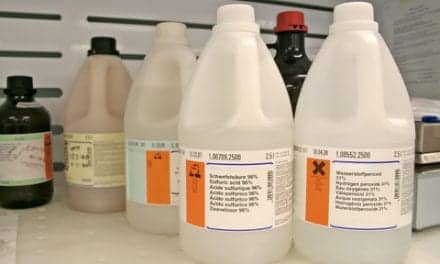The American College of Chest Physicians (Chest), American Association for Bronchology and Interventional Pulmonology (AABIP), and American Association of Interventional Pulmonology Program Directors (AIPPD) have issued an expert panel report for the use of tracheostomy during the COVID-19 pandemic while minimizing the risk of infection to healthcare workers.
According to these organizations, many hospitalized COVID-19 patients require prolonged mechanical ventilation and may benefit from a tracheostomy. “Given that the virus is transmitted via droplets, open airway procedures such as tracheostomy pose a significant risk to healthcare workers,” they wrote, citing evidence from the 2003 SARS outbreak and the fact that tracheostomy is considered an aerosol-generating procedure.
Some experts recommend delaying tracheostomy for at least 2-3 weeks in patients with COVID-19-associated respiratory failure. The panel concludes that specific timing of tracheostomy cannot be recommended. There is no evidence for routine repeat RT-PCR testing in patients with confirmed COVID-19 evaluated for tracheostomy.
Given the paucity of evidence specific to the patient population with COVID-19, the panel conducted a systematic search and drew heavily on existing evidence-based standards of care to offer guidance from established management strategies where COVID-specific suggestions could not be provided. Written from multi-institutional and multisociety perspectives, the panel conducted a robust Delphi process to provide context for the use of tracheostomy to direct patient management and address an identified knowledge gap.
“In some heavily affected areas, the COVID-19 pandemic is impacting health care systems in an unprecedented manner. While tracheostomy may allow faster liberation from mechanical ventilation, a shorter ICU stay and may impact the availability of ICU resources, patient and HCW safety remain the central priority as we better understand factors impacting outcomes in those with prolonged respiratory failure,” stated co-lead author Carla Lamb, MD, FCCP, Lahey Hospital and Medical Center, Burlington, MA. “One of the strengths of this expert panel report is that it represents the opinions and perspectives of intensive care and interventional pulmonary experts from 10 states with some of the highest burden of COVID-19 in the US.”
The goal of this report is to translate available evidence into a list of practical recommendations. The eight recommendations presented in the report include the following:
- In patients with COVID-19-related respiratory failure, either open surgical tracheostomy or percutaneous dilatational tracheostomy can be performed in patients expected to require prolonged mechanical ventilation.
- In patients with COVID-19-related respiratory failure, perform tracheostomy in a negative-pressure room, preferably in the ICU. As an alternative, a negative-pressure room in the operating room could be used, with special attention to minimizing transportation-related risk of exposure.
- Routine RT-PCR testing (nasopharyngeal swab or lower respiratory sample) prior to performing tracheostomy in patients with confirmed COVID-19- related respiratory failure is not recommended.
- In patients with COVID-19-related respiratory failure, it is recommended that tracheostomy be performed by a team consisting of the least number of providers with the highest level of experience wearing enhanced personal protective equipment (PPE).
The report states there are still unanswered questions regarding evolving staff preparation and protection, timing, location, technique and postintervention care for this procedure. The panel recommends performing the procedure using techniques that minimize aerosolization. More than ever before, optimizing the safety of both patients and HCWs while balancing the challenges of resources will take a nimble multidisciplinary approach.
“Tracheostomy is an essential clinical strategy for managing patients with COVID-19, but as this report emphasizes, the use of appropriate personal protective equipment is critical to reducing the risk to health care workers and best practices to minimize aerosolization should be used,” said Steven Q. Simpson, MD, FCCP, president-elect of Chest.










